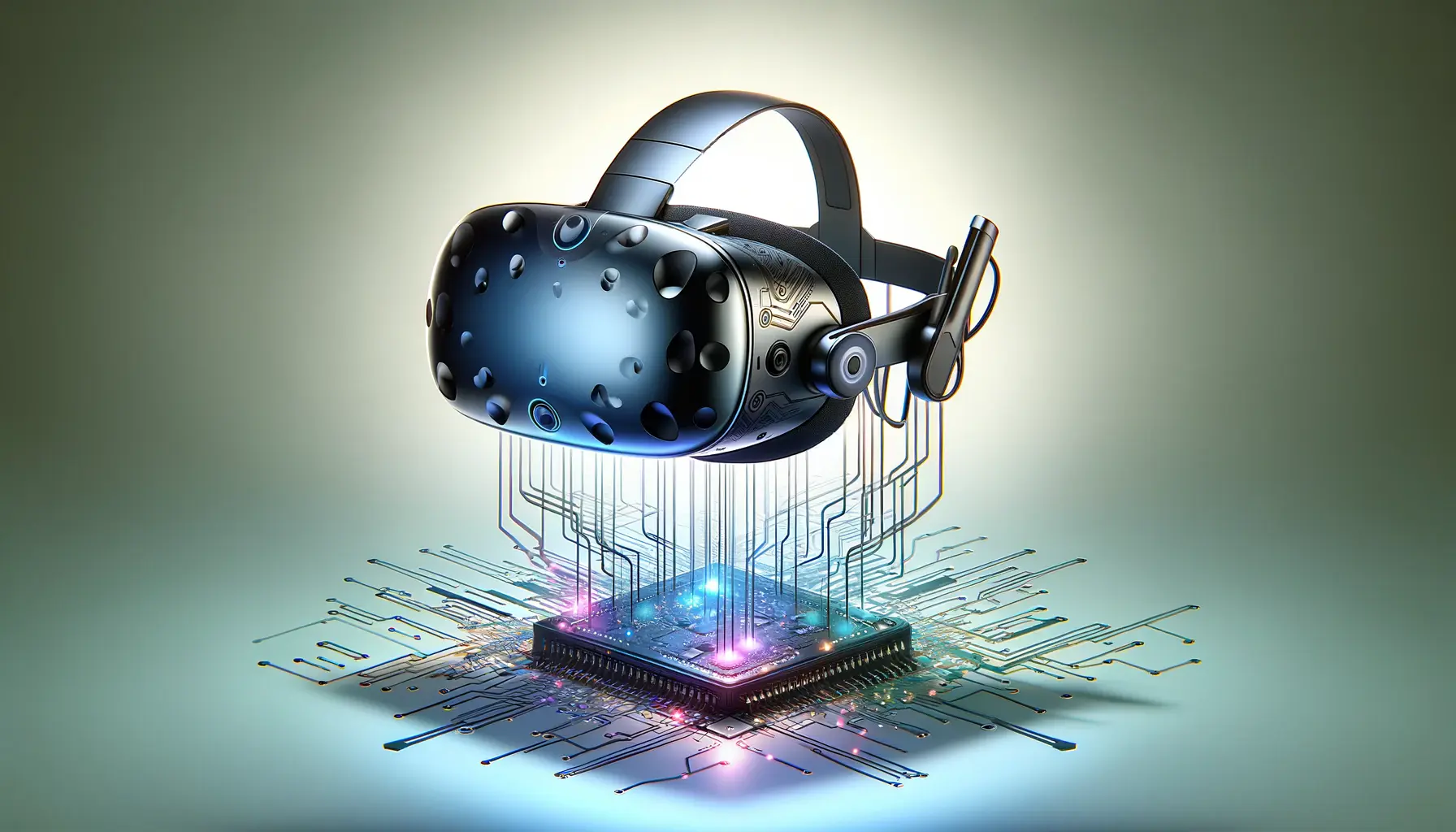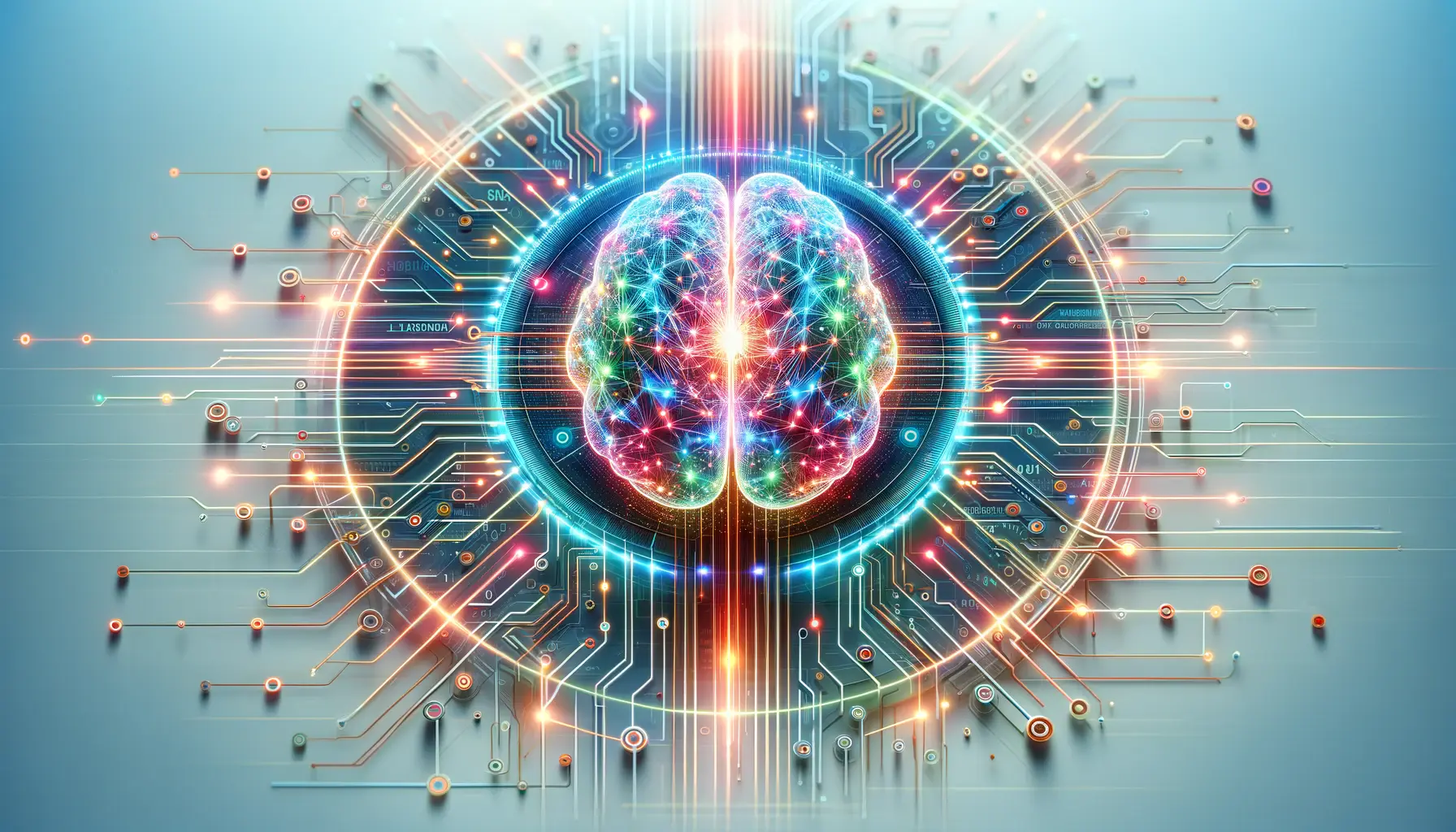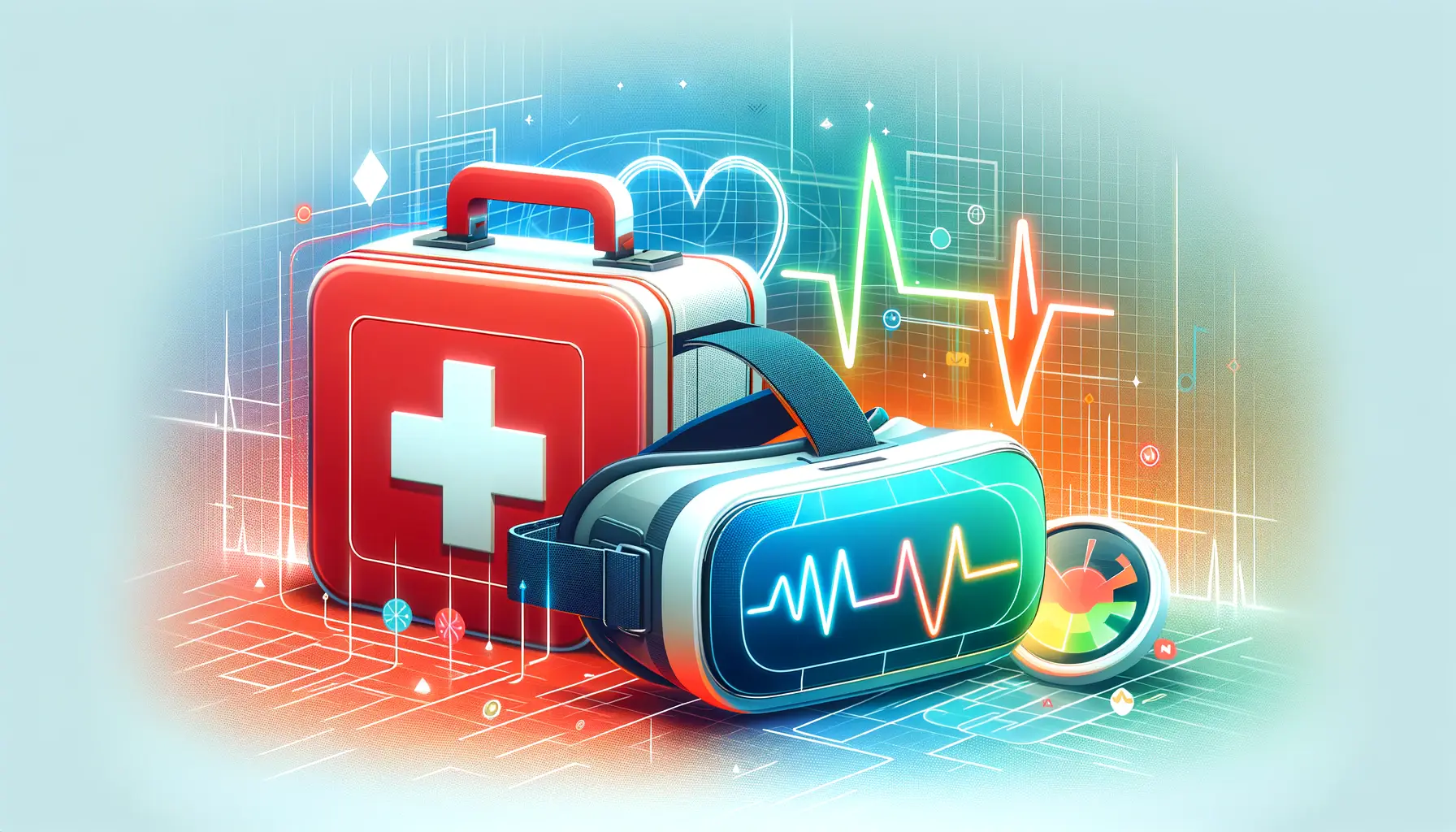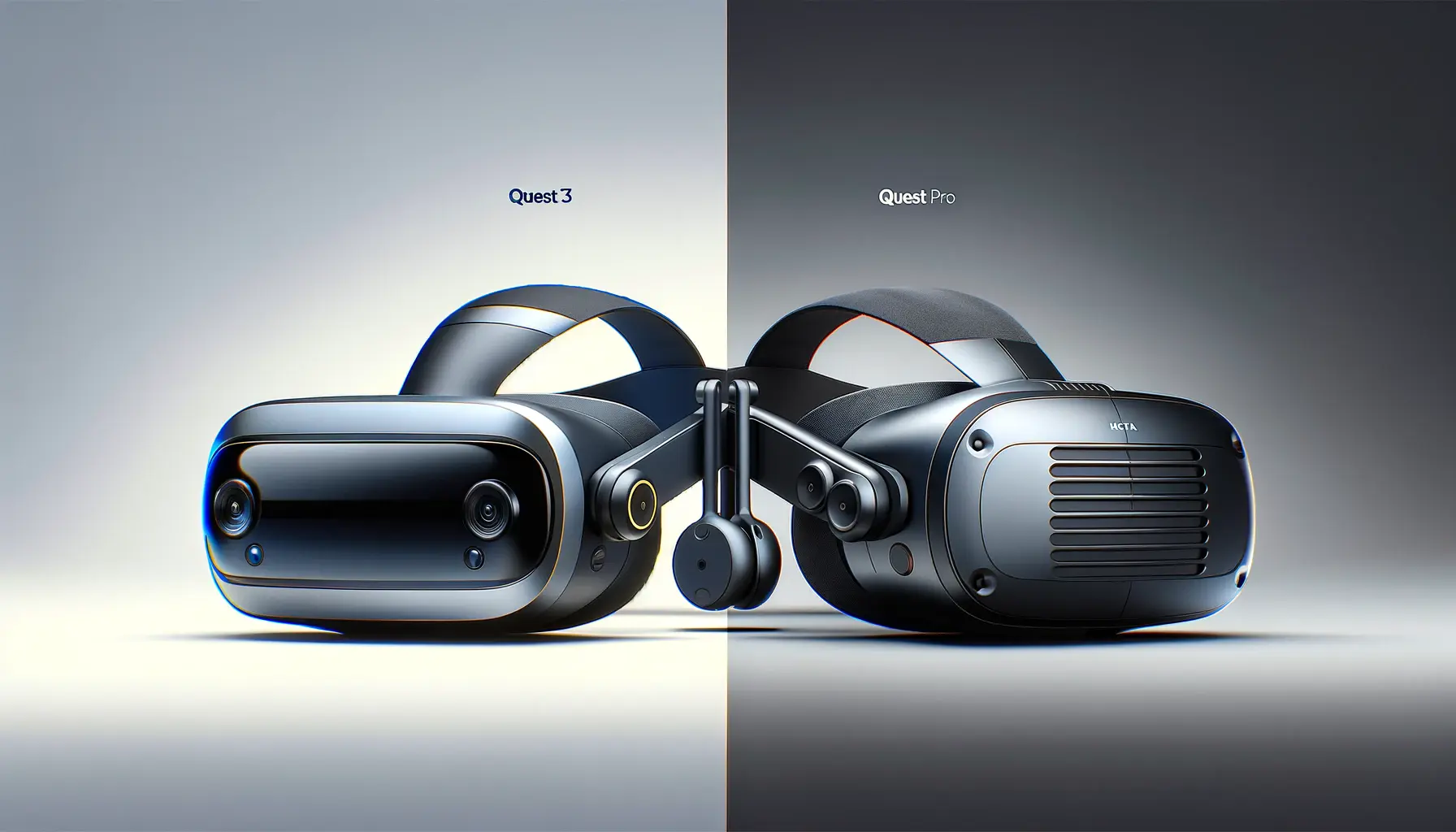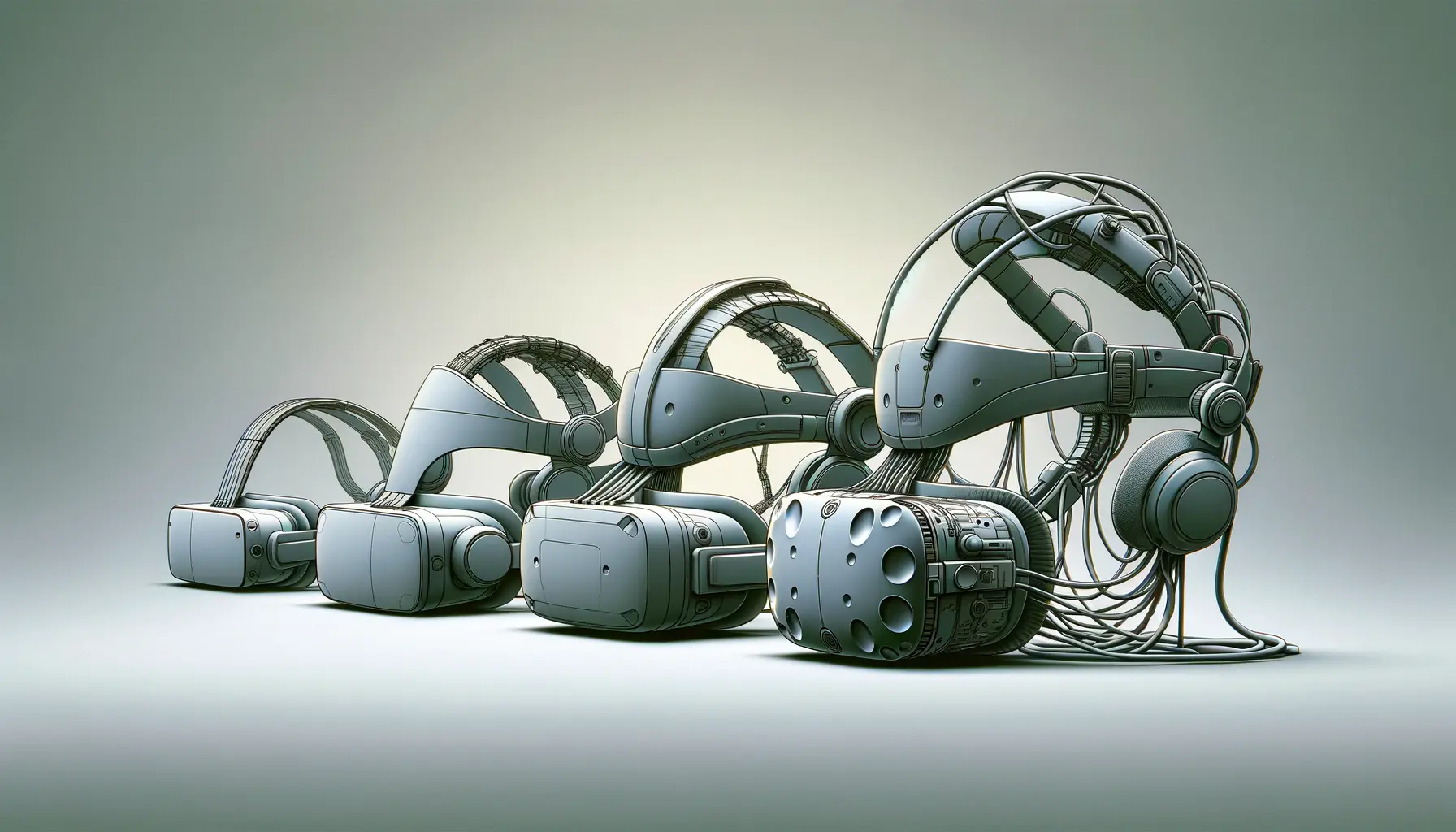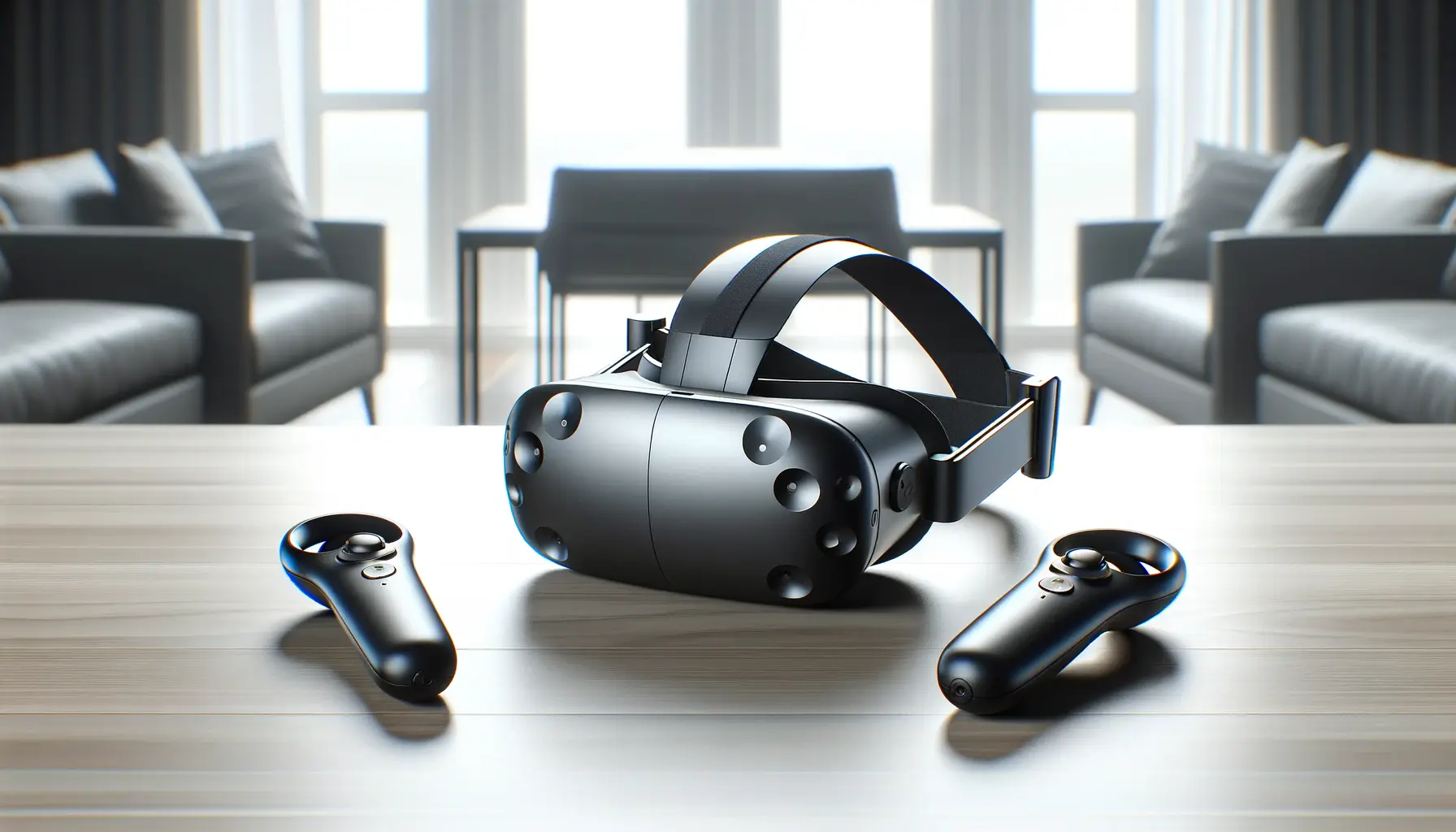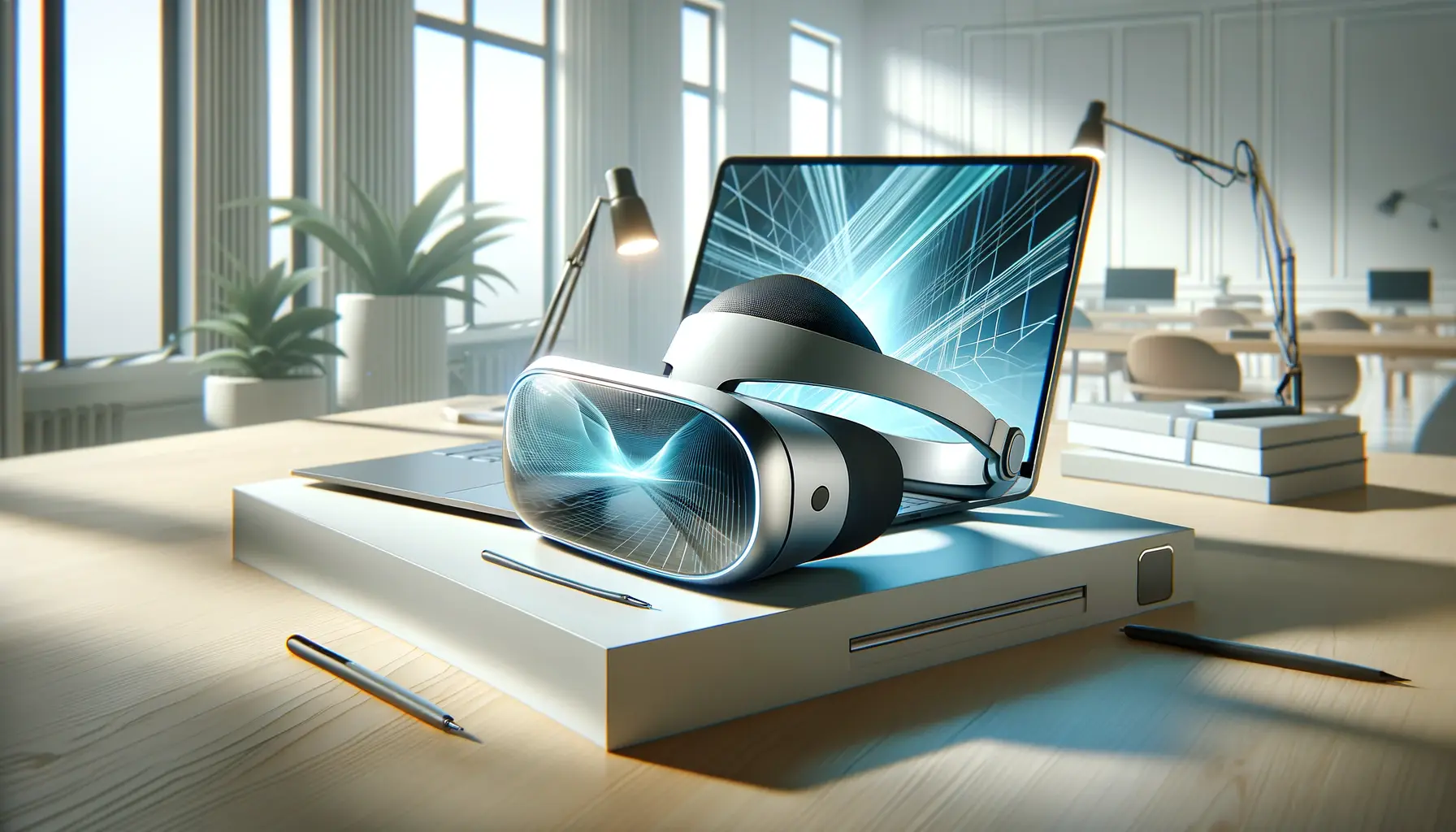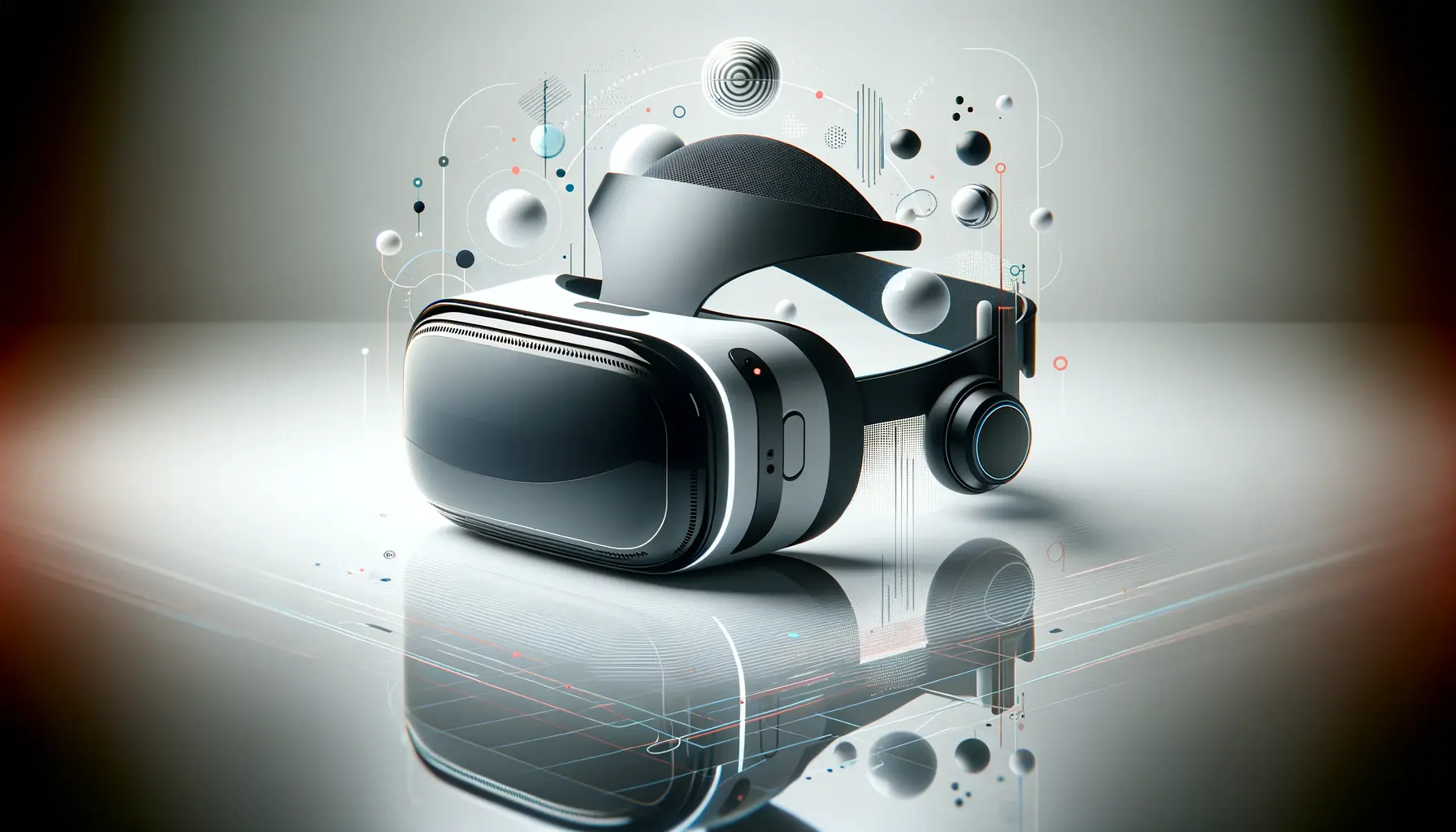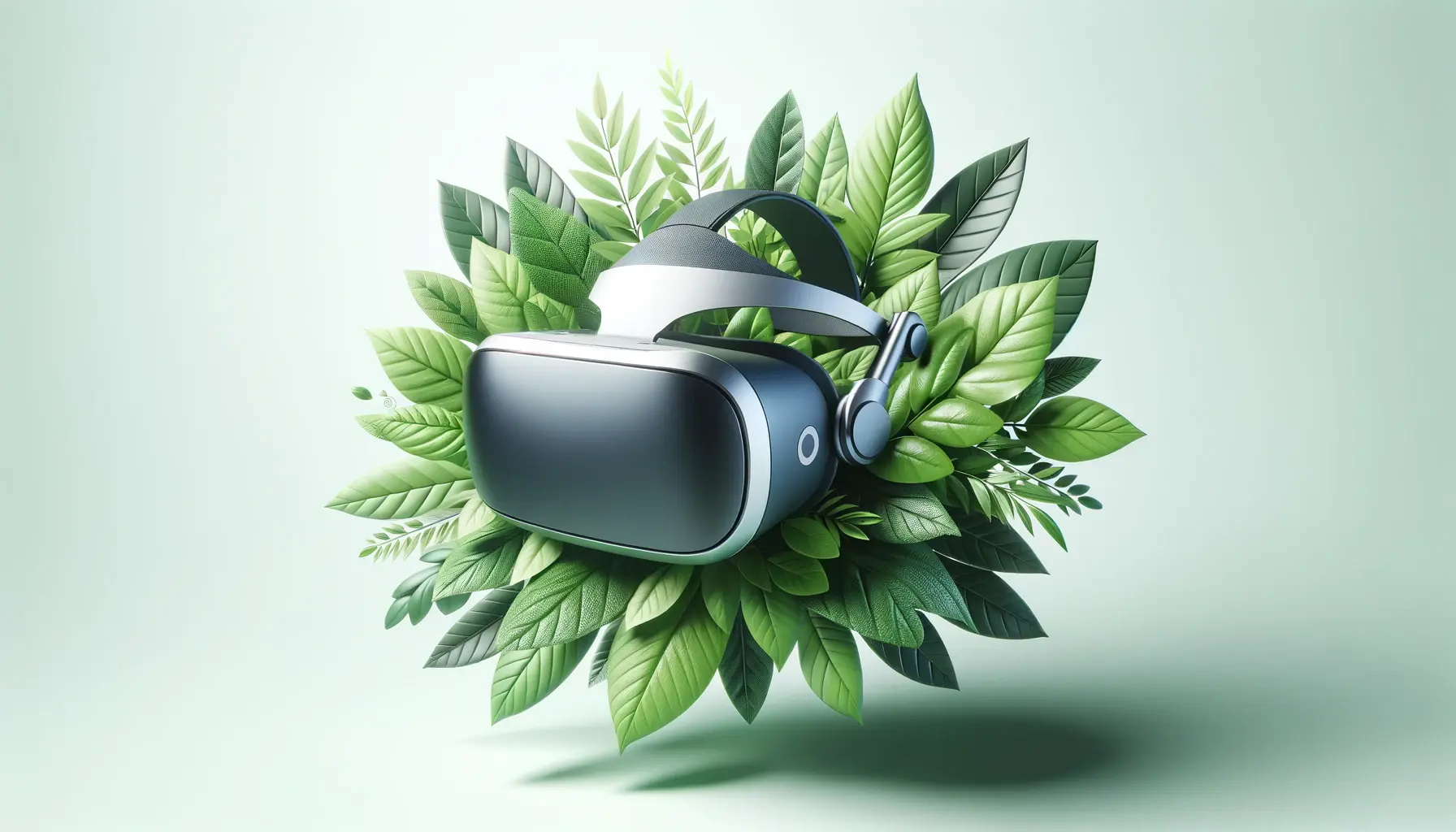The realm of virtual reality (VR) is witnessing a monumental shift with the introduction of the Meta Quest 3, a device that not only promises to redefine immersive experiences but also sets a new benchmark in tracking technology.
As the latest entrant in the Meta Quest series, this headset is not just an upgrade; it’s a leap towards the future of VR, offering unparalleled precision and responsiveness in tracking movements.
The significance of tracking in VR cannot be overstated, as it directly influences the user’s experience, immersion, and interaction within the virtual world.
Meta Quest 3’s advancements in tracking technology are a testament to Meta’s commitment to pushing the boundaries of what’s possible in VR.
By enhancing the accuracy and speed of tracking, Meta Quest 3 ensures that every movement, no matter how slight, is captured and reflected in the virtual environment with minimal latency.
This improvement is crucial for VR applications that demand high precision, such as gaming, training simulations, and virtual meetings, where the quality of interaction can make or break the experience.
- Evolution of Tracking in Meta Quest Series
- Technological Innovations Behind Tracking Enhancements
- User Experience and Interaction
- Challenges and Solutions in Tracking Technology
- Future Directions in VR Tracking
- Integrating VR into Everyday Life
- Enhancing Creative Expression Through VR
- Revolutionizing Virtual Reality: The Meta Quest 3 Experience
- Meta Quest 3 Tracking Improvements FAQ
Evolution of Tracking in Meta Quest Series
The journey of tracking technology in the Meta Quest series has been one of constant innovation and refinement.
From the original Oculus Quest to the Quest 2, and now to the Quest 3, each iteration has brought significant enhancements in how the system perceives and interprets user movements.
The Meta Quest 3, in particular, represents a significant leap forward, incorporating state-of-the-art sensors and algorithms to achieve a level of tracking fidelity that was previously unimaginable.
One of the key improvements in the Meta Quest 3 is the introduction of advanced optical tracking systems.
These systems utilize a combination of infrared LEDs and high-resolution cameras to accurately track the position and orientation of the headset and controllers in real-time.
This not only improves the overall responsiveness of the system but also significantly reduces the occurrence of tracking errors, providing a smoother and more immersive VR experience.
Impact on VR Gaming
The enhancements in tracking technology have a profound impact on VR gaming, one of the most popular applications of virtual reality.
With the Meta Quest 3, gamers can expect a level of precision and immersion that was previously unattainable.
This means more accurate aiming in shooters, more realistic interactions in simulations, and an overall increase in the believability of the virtual world.
The improved tracking also opens up new possibilities for game developers, allowing them to create more complex and engaging VR experiences that fully leverage the capabilities of the Meta Quest 3.
Moreover, the advancements in tracking technology extend beyond just the visual aspect of VR.
They also enhance the haptic feedback system, providing more nuanced and realistic tactile sensations that correspond with the user’s actions in the virtual environment.
This synergy between visual tracking and haptic feedback creates a more cohesive and immersive VR experience, further blurring the line between the virtual and the real.
The Meta Quest 3’s tracking improvements are not just a technical achievement; they represent a significant step forward in making virtual reality more immersive, responsive, and accessible to a wider audience.
Technological Innovations Behind Tracking Enhancements
The Meta Quest 3’s leap in tracking accuracy and speed is underpinned by several key technological innovations.
These advancements not only contribute to the device’s superior performance but also highlight Meta’s dedication to pushing the envelope in VR technology.
Understanding these innovations provides insight into how the Meta Quest 3 achieves its remarkable tracking capabilities.
At the heart of these improvements are the cutting-edge sensors and algorithms designed to work in harmony.
These components are crucial for interpreting the user’s movements with high fidelity, ensuring that the virtual environment reacts in real-time to physical actions.
Advanced Optical Sensors
- High-Resolution Cameras: The Meta Quest 3 utilizes high-resolution cameras that capture detailed images of the surrounding environment. This allows for more precise tracking of the headset and controllers, even in complex or rapidly changing scenes.
- Infrared LED Tracking: Infrared LEDs on the controllers emit light that is invisible to the human eye but can be detected by the headset’s cameras. This system enables accurate tracking of controller positions and orientations without interference from ambient light.
Improved Tracking Algorithms
- Machine Learning Models: Meta Quest 3 employs advanced machine learning models that predict and interpret user movements. These models are trained on vast datasets, allowing them to accurately track a wide range of motions and gestures.
- Real-Time Data Processing: The headset’s onboard processors are capable of handling large volumes of data in real-time. This ensures that tracking information is processed quickly, minimizing latency and enhancing the responsiveness of the VR experience.
Integration with Virtual Environments
- Dynamic Object Interaction: The improved tracking system allows for more dynamic interactions with virtual objects. Users can manipulate objects in the virtual world with greater precision, from grasping and moving to rotating and applying force.
- Environmental Awareness: The Meta Quest 3’s sensors can map the physical environment and translate it into the virtual space. This enables features like virtual boundaries and object avoidance, enhancing safety and immersion.
The technological innovations behind the Meta Quest 3’s tracking enhancements are a testament to Meta’s investment in creating a truly immersive and interactive VR platform.
User Experience and Interaction
The advancements in tracking technology within the Meta Quest 3 significantly elevate the user experience and interaction within virtual environments.
These improvements have a direct impact on how users engage with VR, making experiences more intuitive, immersive, and enjoyable.
The seamless integration of physical movements with virtual responses is key to achieving a high level of presence in VR, a core objective of the Meta Quest 3.
Enhanced Immersion and Presence
One of the most significant benefits of improved tracking is the enhancement of immersion and presence within virtual environments.
Users can move naturally and see their actions mirrored accurately in VR, which helps suspend disbelief and fosters a deeper connection with the virtual world.
This level of immersion is crucial for various VR applications, from gaming and entertainment to education and training.
Intuitive User Interfaces
With the Meta Quest 3, user interfaces in VR have become more intuitive and user-friendly.
The precise tracking allows for more natural interactions, such as grabbing objects, pushing buttons, or gesturing to navigate menus.
This reduces the learning curve for new users and enhances the overall usability of VR applications.
- Gesture Recognition: The system’s ability to recognize and interpret a wide range of gestures enables users to perform complex actions with simple movements, making the interaction feel more natural and fluid.
- Physical Feedback: Improved tracking also allows for more accurate haptic feedback, providing users with tactile responses that correspond to their actions in the virtual world. This feedback is essential for creating a convincing and engaging VR experience.
Applications Beyond Gaming
The implications of Meta Quest 3’s tracking improvements extend far beyond gaming.
In educational settings, students can interact with virtual models and simulations in a way that mirrors real-world manipulation, enhancing learning outcomes.
For professional training, such as medical or technical skills development, the precise tracking allows for realistic simulations where every detail matters.
- Virtual Meetings: Enhanced tracking supports more expressive avatars and gestures, making virtual meetings more engaging and closer to real-life interactions.
- Art and Design: Artists and designers can use VR as a tool for creation, benefiting from the ability to interact with their work in three dimensions with unprecedented precision.
The Meta Quest 3’s tracking improvements are reshaping the landscape of virtual reality, broadening its appeal and utility across a wide range of fields and applications.
Challenges and Solutions in Tracking Technology
While the Meta Quest 3 represents a significant leap forward in VR tracking technology, achieving this level of precision and responsiveness is not without its challenges.
From environmental factors to hardware limitations, several obstacles must be overcome to provide a seamless VR experience.
However, Meta’s innovative approach to these challenges highlights their commitment to advancing VR technology.
Environmental Factors
One of the primary challenges in VR tracking is dealing with varying environmental conditions.
Lighting, physical space, and external movements can all impact the accuracy of tracking systems.
The Meta Quest 3 addresses these issues through adaptive algorithms and sensor fusion, which allow the device to maintain consistent tracking performance in a wide range of environments.
- Adaptive Lighting: The Quest 3’s cameras and sensors are designed to work under different lighting conditions, from dimly lit rooms to bright outdoor settings, ensuring reliable tracking without manual adjustments.
- Space Calibration: The headset can quickly map and adapt to the user’s physical space, creating a virtual boundary that prevents collisions with real-world objects, enhancing both safety and immersion.
Hardware Limitations
Another challenge in advancing VR tracking technology is the physical limitations of the hardware.
Size, weight, and power consumption all play critical roles in the design and functionality of a VR headset.
The Meta Quest 3 tackles these limitations through hardware optimization and energy-efficient design, balancing performance with user comfort.
- Compact Sensor Design: By integrating smaller, more efficient sensors, the Quest 3 minimizes bulk without compromising on tracking accuracy, resulting in a lighter and more comfortable headset.
- Power Management: Advanced power management techniques extend battery life while maintaining high tracking performance, ensuring longer play sessions without frequent recharging.
Software Optimization
Software plays a crucial role in interpreting the data collected by the headset’s sensors.
The complexity of real-time motion tracking requires sophisticated algorithms that can quickly process and translate movements into the virtual environment.
The Quest 3 leverages optimized software solutions to enhance tracking accuracy and reduce latency.
- Real-Time Processing: The headset’s software is optimized for real-time data processing, ensuring that movements are reflected in the virtual world with minimal delay.
- Machine Learning Enhancements: By incorporating machine learning techniques, the Quest 3’s software can predict user movements, improving tracking smoothness and reducing instances of jitter or loss of tracking.
Meta’s approach to overcoming the challenges in VR tracking technology demonstrates their dedication to providing an immersive and accessible VR experience for all users.
Future Directions in VR Tracking
The Meta Quest 3’s advancements in tracking technology not only redefine current standards but also pave the way for future innovations in virtual reality.
As we look ahead, the trajectory of VR tracking technology promises even more immersive and interactive experiences, with several key areas poised for significant development.
Body and Eye Tracking
While the Meta Quest 3 has made substantial progress in hand and head tracking, the next frontier in VR technology lies in full body and eye tracking.
These capabilities would allow for a more comprehensive capture of user movements, translating into even more realistic virtual avatars and interactions.
- Full Body Tracking: Incorporating sensors capable of tracking the user’s entire body would enable a new level of immersion, allowing for complex movements and interactions within the virtual environment.
- Eye Tracking: By understanding where the user is looking, VR systems can render scenes more efficiently and create more engaging and realistic eye contact in social VR applications.
Environmental Interaction
The future of VR also lies in enhancing how users interact with the virtual environment itself.
Advanced tracking technologies could enable users to manipulate virtual objects with unprecedented precision and realism, from feeling textures to sensing weight and resistance.
- Haptic Feedback: Innovations in haptic technology could provide tactile feedback that mimics the sensation of touching real objects, enhancing the sense of presence in VR.
- Physical Properties Simulation: Future VR systems might simulate the physical properties of virtual objects, such as temperature or weight, further blurring the line between virtual and physical realities.
Wireless and Cloud-Based Solutions
As VR technology evolves, the move towards completely wireless and cloud-based systems will become increasingly important.
This shift would not only enhance user comfort by eliminating the need for tethered connections but also allow for more powerful processing capabilities through cloud computing.
- Wireless Freedom: Future iterations of VR headsets will likely emphasize wireless technology, allowing for greater freedom of movement without compromising on tracking accuracy or visual fidelity.
- Cloud Processing: Leveraging cloud computing for processing VR content can reduce the hardware requirements for the headset, potentially leading to lighter and more comfortable designs.
The future of VR tracking technology holds the promise of creating virtual experiences that are indistinguishable from reality, offering endless possibilities for entertainment, education, and beyond.
Integrating VR into Everyday Life
The advancements in tracking technology, exemplified by the Meta Quest 3, are not just about enhancing virtual reality experiences; they’re about integrating VR into our everyday lives.
As VR becomes more immersive and intuitive, it opens up a plethora of applications beyond gaming and entertainment, making it a valuable tool for various aspects of daily life.
Education and Learning
VR’s potential in education is vast, with the Meta Quest 3’s tracking improvements making it an even more powerful tool for interactive learning.
Students can explore historical sites, dissect virtual cadavers, or conduct complex scientific experiments in a safe and controlled virtual environment.
This hands-on approach to learning can enhance understanding and retention of complex subjects.
- Virtual Field Trips: Allows students to visit inaccessible locations, from the depths of the ocean to the surface of Mars, providing a rich context for learning.
- Interactive Simulations: Enables complex concepts, such as physics phenomena or biological processes, to be visualized and manipulated in ways that are impossible in the physical classroom.
Healthcare and Therapy
VR technology, bolstered by precise tracking, is revolutionizing healthcare and therapy.
It offers new methods for treatment, rehabilitation, and training for healthcare professionals.
The immersive nature of VR can be used for pain management, overcoming phobias, or simulating surgical procedures for training purposes.
- Virtual Rehabilitation: Patients can engage in guided physical therapy exercises in a virtual environment, making the rehabilitation process more engaging and measurable.
- Psychological Therapy: VR can simulate environments or situations to help patients confront anxieties, phobias, or PTSD in a controlled and therapeutic setting.
Remote Work and Collaboration
The Meta Quest 3’s enhanced tracking capabilities facilitate more natural and immersive remote work and collaboration experiences.
Virtual meeting spaces can replicate the dynamics of in-person interactions, with participants represented by avatars that mimic their real-life movements and gestures, making remote work more personal and effective.
- Virtual Offices: Create a sense of presence and spatial awareness that traditional video conferencing lacks, enhancing teamwork and collaboration.
- Design and Prototyping: Teams can collaboratively work on 3D models or designs in a shared virtual space, regardless of their physical location.
As VR technology continues to evolve, its integration into everyday life will become more seamless, transforming how we learn, work, and care for our health.
Enhancing Creative Expression Through VR
The Meta Quest 3’s advancements in tracking technology not only improve user experience and interaction but also open new avenues for creative expression.
Artists, designers, and creators can now explore virtual reality as a medium for art, design, and storytelling, pushing the boundaries of traditional creative processes.
Virtual Art and Sculpture
With the Meta Quest 3, artists have the tools to sculpt, paint, and create art in three-dimensional space.
The precise tracking allows for intricate brush strokes and detailed sculpting, enabling artists to bring their visions to life in a virtual environment.
This new form of art-making is not constrained by physical materials or space, offering unlimited possibilities for creativity.
- 3D Canvas: Artists can work in a truly three-dimensional canvas, creating artworks that can be viewed and experienced from any angle.
- Collaborative Art: VR enables multiple artists to collaborate on a single piece in real-time, even if they are physically miles apart, fostering a new form of collaborative creativity.
Virtual Design and Architecture
Designers and architects can utilize the Meta Quest 3 to visualize and iterate on their projects in a fully immersive environment.
The ability to walk through virtual buildings or interact with virtual prototypes before they are built can revolutionize the design process, making it more intuitive and efficient.
- Immersive Prototyping: Designers can create and interact with virtual prototypes, gaining a better understanding of how a design works in a three-dimensional space.
- Client Presentations: Architects can take clients on virtual tours of proposed designs, providing a clear and immersive understanding of the project.
Storytelling and Entertainment
The immersive nature of VR, enhanced by the Meta Quest 3’s tracking technology, offers new possibilities for storytelling and entertainment.
Filmmakers, writers, and content creators can craft experiences that engage the audience in ways that were previously impossible, creating a more interactive and emotional connection with the story.
- Interactive Narratives: Stories can unfold based on the viewer’s choices or movements, creating a personalized narrative experience.
- Immersive Theater: Combining elements of traditional theater with VR allows for performances where the audience is part of the story, interacting with the environment and characters.
The notion that virtual reality is solely for gaming is quickly becoming outdated as the Meta Quest 3 demonstrates the platform’s potential for broad creative exploration and expression.
Revolutionizing Virtual Reality: The Meta Quest 3 Experience
The Meta Quest 3 marks a significant milestone in the evolution of virtual reality, offering unparalleled tracking improvements that enhance user engagement and immersion.
Through its innovative technology, the Meta Quest 3 not only addresses previous limitations but also opens up new possibilities for interaction, creativity, and practical applications in everyday life.
This device is not just an advancement in VR hardware; it’s a gateway to new virtual experiences that were once the realm of science fiction.
The Future of Interaction and Immersion
With its state-of-the-art tracking capabilities, the Meta Quest 3 redefines what it means to interact with the digital world.
The precision and responsiveness of the system allow for a seamless blend of physical and virtual realities, setting a new standard for immersion.
This leap forward in technology facilitates a wide range of applications, from gaming and entertainment to education and professional training, making virtual experiences more accessible and engaging for users around the globe.
Empowering Creativity and Innovation
The Meta Quest 3 serves as a powerful tool for artists, designers, and creators, offering a new medium for artistic expression and design.
The ability to sculpt, paint, and create in a three-dimensional virtual space unleashes creative potential and paves the way for innovative art forms and design concepts.
Moreover, the enhanced tracking technology of the Meta Quest 3 allows storytellers and content creators to craft immersive narratives that engage audiences in unprecedented ways.
Integrating VR into Daily Life
The implications of the Meta Quest 3’s tracking improvements extend far beyond entertainment, promising to integrate VR technology into various aspects of daily life.
From transforming educational methodologies to revolutionizing healthcare treatments and facilitating remote work, the Meta Quest 3 demonstrates the potential of VR to improve and enhance our everyday experiences.
As VR technology continues to evolve, it will increasingly become a staple in our lives, offering new ways to learn, work, and connect with others.
Conclusion
The Meta Quest 3 stands at the forefront of virtual reality technology, its tracking improvements heralding a new era of interaction, creativity, and practical VR applications.
As we look to the future, the potential of the Meta Quest 3 and subsequent advancements in VR technology is boundless, promising to transform our virtual and physical worlds in profound ways.
The journey of virtual reality is just beginning, and the Meta Quest 3 is leading the charge towards a future where the boundaries between the real and the virtual are seamlessly intertwined.
Meta Quest 3 Tracking Improvements FAQ
Explore the most frequently asked questions about the tracking improvements in Meta Quest 3, providing insights into its enhanced virtual reality experience.
Meta Quest 3 features advanced optical sensors and algorithms, offering precise and responsive tracking of both headset and controllers, significantly enhancing user interaction and immersion.
While Meta Quest 3 primarily focuses on head and hand tracking, full body tracking is anticipated as a future direction for more immersive VR experiences.
Yes, Meta Quest 3’s tracking system is designed to function accurately across a wide range of lighting conditions, ensuring consistent performance.
Yes, Meta Quest 3 introduces significant tracking improvements over Quest 2, including higher accuracy and reduced latency for a more immersive VR experience.
Meta Quest 3 uses a combination of infrared LEDs, high-resolution cameras, and machine learning to accurately map and adapt to the user’s physical environment.
Meta Quest 3’s controller tracking eliminates the need for external tracking rings, using embedded infrared LEDs and advanced algorithms for precise detection.
Yes, Meta Quest 3 is designed to accurately track fast movements, making it ideal for dynamic games and applications requiring quick reflexes.
Despite its advanced tracking capabilities, Meta Quest 3 employs efficient power management to balance performance with battery life, ensuring extended play sessions.
